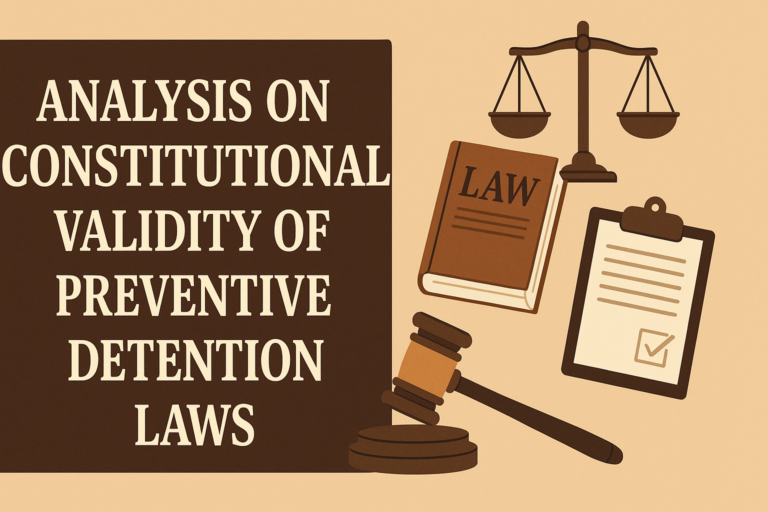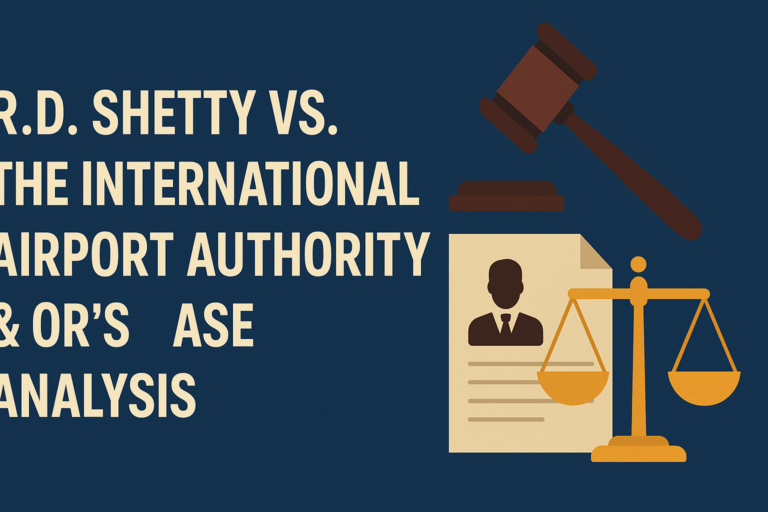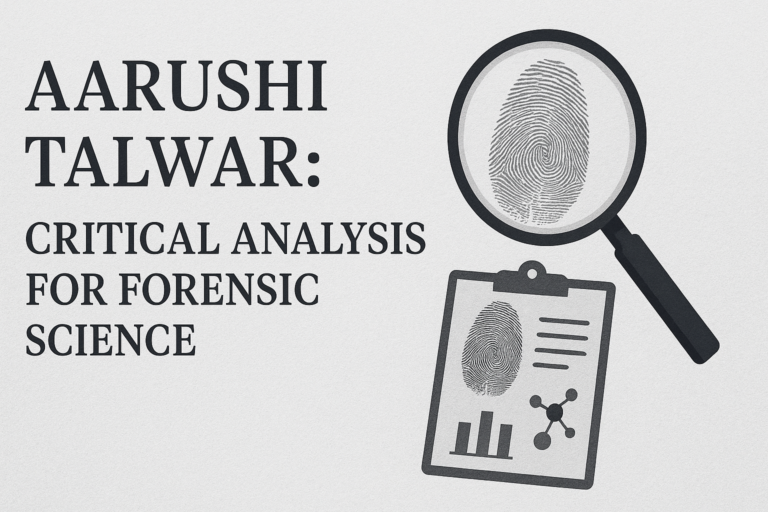
This article has been written by Parinitha, a 5th year BCOM LLB Student from St Joseph’s College of Law, Bengaluru.

RAMA DEVI VS. STATE OF BIHAR AND ORS.
PETITIONER – Rama Devi
VS
RESPONDENT – State of Bihar and Ors.
CITATION – Criminal Appeal Nos. 2623-2631 & 2632-2640 of 2014
DATE OF JUDGMENT – October 3, 2024
HON’BLE JUDGES – Justice Sanjiv Khanna, Justice Sanjay Kumar, Justice R. Mahadevan
INTRODUCTION
This case involves an appeal against the acquittal of nine accused persons in the assassination of Brij Bihari Prasad, a prominent political figure and a member of the Bihar Legislative Assembly. The case highlights the complexities involved in criminal trials, particularly concerning the admissibility of eyewitness testimonies, the significance of procedural delays, and the legal principles governing criminal conspiracy. The Supreme Court, after carefully analysing the evidence and legal arguments, reinstated the conviction of two accused while upholding the acquittal of others due to the lack of direct evidence establishing their involvement.
FACTS OF THE CASE
Brij Bihari Prasad, who was in judicial custody, was undergoing treatment at Indira Gandhi Institute of Medical Sciences (IGIMS), Patna. On June 13, 1998, at around 8:15 PM, a group of armed assailants entered the hospital premises in two vehicles and fired indiscriminately at Prasad and his bodyguard, Lakshmeshwar Sahu, killing them instantly. The assailants fled the scene after executing the attack.
The case was initiated based on First Information Report (FIR) No. 336/1998, lodged by Amarendra Kumar Sinha (PW-10), an eyewitness to the incident. Initially, the Trial Court convicted nine accused under Sections 302, 307, 333, 355, and 379 of the Indian Penal Code (IPC) and Section 27 of the Arms Act. However, the Patna High Court overturned these convictions due to inconsistencies in the prosecution’s case and procedural lapses in the investigation. The State of Bihar and Rama Devi, the widow of the deceased, subsequently challenged the High Court’s decision in the Supreme Court.
ISSUES
- Whether the Patna High Court erred in reversing the conviction of the accused despite the presence of eyewitness testimonies?
- Whether the eyewitness accounts were credible and sufficient to prove the guilt of the accused beyond a reasonable doubt?
- Whether the delay in forwarding the FIR to the magistrate affected the integrity of the prosecution’s case?
- Whether the prosecution successfully established the charge of criminal conspiracy against the accused?
ARGUMENTS OF THE PETITIONER
The petitioners argued that the High Court had wrongly dismissed the testimonies of eyewitnesses due to minor inconsistencies. They emphasized that the prosecution had successfully demonstrated a clear motive for the assassination, given the history of political rivalry between the accused and the deceased.
Furthermore, they contended that the delay in forwarding the FIR was a technical lapse that did not significantly impact the case’s merits. They pointed out that while some witnesses turned hostile, the remaining testimonies provided sufficient evidence to establish the involvement of certain accused. The petitioners also highlighted forensic evidence, including ballistic reports, which corroborated the prosecution’s version of events.
ARGUMENTS OF THE RESPONDENT
The respondents contended that the High Court correctly identified contradictions in the prosecution’s narrative, leading to the acquittal. They argued that:
- The eyewitness testimonies were unreliable due to inconsistencies in their statements.
- The delay in forwarding the FIR suggested potential manipulation by law enforcement agencies.
- There was no direct evidence linking all accused to the crime scene.
- The charge of criminal conspiracy was not proven, as key witnesses failed to substantiate the prosecution’s claims.
- The weapons and vehicles allegedly used in the crime were not recovered, weakening the case against the accused.
COURT’S REASONING
The Supreme Court carefully examined the prosecution’s evidence, the credibility of witnesses, and the procedural lapses identified by the High Court. The Court held that:
- Eyewitness testimonies were crucial and should not have been disregarded solely due to minor inconsistencies, as memory lapses over time are natural.
- The delay in forwarding the FIR was satisfactorily explained, and it did not significantly undermine the case.
- The prosecution failed to prove a coordinated conspiracy, as there was insufficient direct evidence to establish a premeditated plan involving all accused.
- The convictions of Mantu Tiwari (A-4) and Vijay Kumar Shukla @ Munna Shukla (A-8) were justified based on their direct involvement in the attack.
- The acquittal of Suraj Bhan Singh (A-1), Mukesh Singh (A-2), Lallan Singh (A-3), Ram Niranjan Chaudhary (A-6), and Rajan Tiwari (A-9) was upheld due to lack of conclusive evidence.
PRECEDENT ANALYSIS
The Supreme Court referred to several landmark judgments to support its findings:
- Deep Chand v. State of Haryana (1969) – Established that falsus in uno, falsus in omnibus does not apply in Indian law, meaning that minor contradictions do not render an entire testimony unreliable.
- State of Rajasthan v. Daud Khan (2016) – Held that delay in forwarding an FIR does not automatically vitiate the prosecution’s case.
- C. Muniappan v. State of Tamil Nadu (2010) – Clarified that testimonies of hostile witnesses could still be considered if portions of their statements support the prosecution’s case.
- Yogesh Singh v. Mahabeer Singh (2017) – Stated that recovery of weapons is not mandatory for proving guilt beyond reasonable doubt.
JUDGMENT
The Supreme Court partially overturned the High Court’s judgment. It reinstated the conviction of Mantu Tiwari (A-4) and Vijay Kumar Shukla @ Munna Shukla (A-8) under Sections 302 and 307 read with Section 34 IPC and sentenced them to life imprisonment with a fine of ₹20,000 each.
However, the Court upheld the acquittal of Suraj Bhan Singh (A-1), Mukesh Singh (A-2), Lallan Singh (A-3), Ram Niranjan Chaudhary (A-6), and Rajan Tiwari (A-9) due to insufficient evidence.
ANALYSIS
This case underscores the importance of eyewitness testimonies in criminal trials and the necessity of carefully evaluating procedural delays. The Supreme Court’s decision balanced the need for justice with the requirement of proving guilt beyond reasonable doubt.
The judgment also highlights the challenges faced in politically motivated crimes, where witnesses may be coerced or influenced, leading to hostile testimonies. The ruling serves as a guiding precedent for how courts should weigh circumstantial and direct evidence, ensuring that technical lapses do not hinder justice.
CONCLUSION
The Supreme Court’s judgment in Rama Devi vs. State of Bihar (2014) reaffirms the significance of legal scrutiny and factual accuracy in criminal trials. By reinstating the conviction of two accused while upholding the acquittal of others due to insufficient evidence, the Court struck a balance between ensuring justice for victims and safeguarding the rights of the accused. This case sets a critical precedent for handling cases where procedural challenges and evidentiary complexities must be carefully navigated.
REFERENCES
- Rama Devi vs. State of Bihar (2014) Criminal Appeal Nos. 2623-2631 & 2632-2640 of 2014
- Indian Penal Code, 1860
- Code of Criminal Procedure, 1973
- Arms Act, 1959
- Deep Chand and Others v. State of Haryana, Criminal Appeal No. 43 of 1968
- State of Rajasthan v. Daud Khan, Criminal Appeal No. 126 of 2010
- C. Muniappan and Others v. State of Tamil Nadu, (2010) 9 SCC 567
- Yogesh Singh v. Mahabeer Singh and Others, (2017) 11 SCC 195






